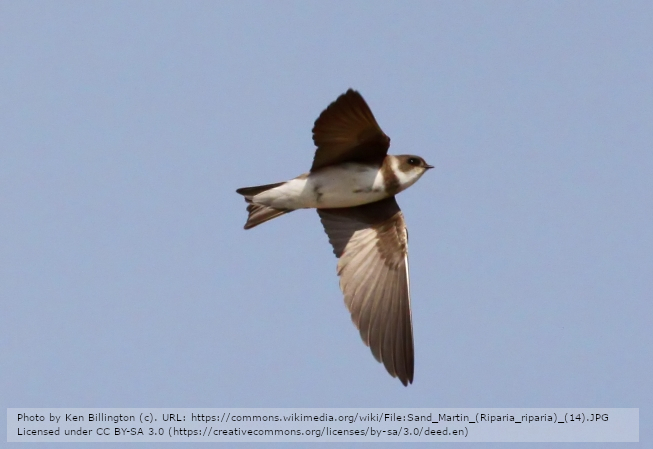Sediment type and breeding strategy of the Bank Swallow Riparia riparia in western Sweden
DOI:
https://doi.org/10.34080/os.v12.22829Keywords:
breeding biology, habitat selection, nest site selection, climate effects, anthropological effectsAbstract
This paper presents an investigation of the sediment used by the Bank Swallow (Sand Martin) Riparia riparia for the construction of breeding tunnels. Grain-size distribution, bulk density and hydraulic conductivity of breeding-tunnel sediment were investigated at four localities in western Sweden. The investigation shows that the Bank Swallow was consistent in using layers composed of a narrow range of fine and medium sand. Ninety percent of the investigated breeding burrows were located in fine to medium sand (0.125–0.5 mm) and 10% in coarse sand (0.5–1.0 mm). No breeding tunnels were found in sediment finer than fine sand or coarser than coarse sand. The fine to medium sand fraction has the properties to hold stable walls and keep dry tunnels even during rainy periods with heavy infiltration. The hydraulic conductivity of the sediment was in the range of 10–4 to 10–3 m/s and the bulk density 1,510–1,575 kg/m3. In Sweden, artificially excavated slopes in gravel and sand pits have long been the dominating breeding locality for the Bank Swallow. However, during the last two decades, four major factors have led to the decrease of breeding localities: (1) a decreasing demand of aggregate resources, (2) landscaping of gravel and sand pits and stabilization of eroding slopes, including river banks and shorelines, (3) a change to quarries as a source for aggregate production, and (4) concentrating gravel and sand exploitation to fewer and larger pits. It is concluded that these factors are important for the decline of the Bank Swallow population in Sweden and possibly elsewhere in Europe and North America.
Downloads

Downloads
Published
How to Cite
Issue
Section
License
Copyright (c) 2002 Bo-Bertil Lind, Jimmy Stigh, Lars Larsson

This work is licensed under a Creative Commons Attribution 4.0 International License.
The copyright of each contribution belongs to the author(s), but all contributions are published under a Creative Commons license, so that anyone is free to share and reuse the contribution as long as the copyright holder is attributed.







